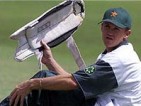Sport Matters
Matt Pitt |
With Richard Dickinson
Sport is a wonderful thing. Pretty well every facet of human existence can be found on a cricket field if you look hard enough, and in the right places. The same applies to football, rugby (either code), or any other sport you care to name. The principles of sport are universal – the agony and ecstasy, the heart and soul, the power and glory. Timeless principles, those by which men and women have been judged for centuries. When William Shakespeare (or possibly Christopher Marlowe…) wrote of “stiffening the sinews, summoning-up the blood, and disguising fair nature with hard-favour’d rage”, he could have been sitting in the home dressing room at Wembley. Likewise, when John Buchanan delivered his team talks to arguably the greatest Australian cricket team of all time, he used Sun Tzu’s The Art of War as his inspiration. There can be no doubt that sport both draws on and gives rise to some of the best elements of the society that surrounds it. Sport is both an essential element of and a ceaseless contributor to modern society.
Why, then, would any government seek to restrict – or allow the restriction of – its public’s access to one of its country’s leading sports? What grounds could there be for the severance of the link between a sport and those who sustain it? One could start by asking the British government. With seven months to go until the beginning of the most anticipated Ashes series since the last one, the UK’s list of “protected events” – that is to say, sporting events which must be shown live on free-to-air TV, come hell or high water – does not include home Test cricket. The listing was removed in 1998, in order that the previous deal (whereby Channel Four showed six out of seven home Tests; Sky Sports one; Sky all home one-day internationals; Sky all away games; and both channels highlights – even if not always at convenient times in C4’s case – of all Tests and all ODIs home and away) could be signed. The agreement to remove the listing was made by the then ECB Chairman, Lord MacLaurin, and Chris Smith, then secretary for culture, media and sport in the Labour cabinet. Mr. Smith agreed only on the condition that Lord MacLaurin gave assurances that no deal would be agreed whereby Tests were sold exclusively to a non-terrestrial broadcaster – a gentleman’s agreement, in short.
The merits of the deal which ran between 1999 and 2005 were excellent: Tests (the preferred form of the game in the UK if no longer many other countries) were still pretty much as visible as they had been in the days when they were shown on the BBC (although C4’s viewing figures were lower, this trend is reflected in just about all comparable programming – BBC1 and BBC2 are simply more mainstream channels than Four, in every respect); yet now that they were covering more than just the odd domestic game, as well as overseas cricket that was often broadcast in the middle of the night, BSkyB were obliged to invest much larger sums than they had previously been doing.
Unfortunately for cricket, and even more unfortunately for C4 whose commitment to the game was first-rate and whose coverage was unspeakably superior to anything the BBC had ever produced, the TV market was changing just as the new deal (which broke with decades of tradition – the BBC’s coverage, although broadly recognisable in 1998 for what it had been in 1972, had been safe, reliable and long-running) took effect. Digital TV had already arrived in 1999, and it took hold quickly. Suddenly, the old restrictions were completely broken – most of the country had made do with four channels for a decade and a half, and now in an instant the possibilities were endless. Somewhat inevitably, this made life much more difficult for channels like C4. Cricket viewing figures dropped every year from ’99 to ’03 (the opening series against New Zealand – which C4 covered three games of – attracted higher average viewing than the one against Australia two years later, for which they broadcast all five). C4, a channel entirely dependent on advertising revenue, also struggled with the unpredictable nature of cricket – a session, never mind a day, lost to weather or an early finish was catastrophic for the price a high-street chain was prepared to pay for a 30-second slot.
All of this meant that, sadly, C4 simply could not afford to keep their cricket coverage up. They made massive losses on it over the seven years and before the end of this period had already appealed to the government for public subsidy, unprecedented in the channel’s 20-year history. So in 2004, their bid for the rights was only quasi-serious. In happier circumstances, this might have meant the rights returned to the BBC, who might have learnt from Four and put on improved coverage, utilising one of their many digital channels acquired since 1998. Had the listing still been in place, this might have been the likely outcome. However, what turned-out was that the BBC did not bid at all. ITV never looked like changing their attitude to the game, which could be best described as complete disinterest. And the result of all this was that Sky Sports saw an opening and grabbed it. Knowing that dangling a serious pot of gold under the ECB’s nose was likely to land them the jackpot (exclusive live FA Premiership rights had sustained them through their first one-and-a-half decades and exclusive live home and away cricket rights was always likely to attract a substantial portion of new subscribers), they duly did, and were duly given it.
Since 2006, when this deal begun, interest in cricket among the UK public has waned considerably. The England team’s rapidly fluctuating performances have been a factor, but this is nothing remotely new – far poorer times in the second half of the 1980s (England were beaten in all five home Test series’ between 1986 and 1989, as well as avoiding defeat just twice out of four away) were endured without a significant drop in audience. The cutting of the cord between the team and the vast majority of fans (Sky Sports is subscribed to by only a small minority of the British population) has been the overwhelming reason.
In early September 2005, something incredible happened. England won back the Ashes, for the first time in front of a home crowd for 20 years. Not only that, but the media beast of Premiership football had been slain. Can anyone remember a sporting event from September 2005 that didn’t involve Kevin Pietersen or Shane Warne? Unlikely, because cricket was all that the British media cared about for the couple of months between the sensational Second Test denouement and the Fifth which completed England’s stunning victory. Cricket permeated every aspect of life in England (and Wales, and Scotland even). The Ashes were all-consuming. People who previously couldn’t have told the difference between a bat and a ball could suddenly tell you Simon Jones’ career-best figures and Test match bowling average, without so much as glancing at their copy of Nuts magazine.
Sporting events of such significant proportions do not come along often. When they do, their appeal transcends the platform on which it is displayed. Anyone who watched the 2008 Wimbledon men’s final between Roger Federer and Rafael Nadal, the two finest tennis players of their generation, will surely agree. The same goes for anyone who witnessed the 1992 American basketball “Dream Team” winning Olympic gold without even trying; anyone who saw the Arsenal “Invincibles” of 2003/04 during the first unbeaten season in English football in 115 years; or anyone who stared in awe as Tiger Woods broke 20 different records and countless social barriers in becoming simultaneously the first black man and the first Asian man to win a major golf championship.
Sport carries with it the potential to inspire, the potential to ignite the emotions like nothing else. None of literature, cinema, music, poetry, or any other medium of popular culture can produce such a blindly passionate response as sport. It is in its role as Britain’s emotional muse that international sport’s greatest attraction lies – its capacity for bringing together those with nothing else in common is unrivalled, even when success does not come easily. Witness the mass outpouring of grief every time England’s footballers are eliminated from a tournament on penalties – the multitude of people of all ages, races and backgrounds, united in their disappointment. Think of the millions of people hunched in front of their televisions for two weeks in mid-summer every year for almost a decade, cheering on Tim Henman’s many failures as if the near-inevitability of defeat were never there. Imagine the desperation of English rugby fans after a World Cup final loss to South Africa last year.
Then think of the joy of the 12th of September 2005. The pure, untouchable knowledge that England had won back The Ashes. England’s status as Ashes holders was celebrated with an open-top bus parade through the streets of London. An estimated 250,000 people turned out to rejoice in the success of a small band of men who had become their heroes. Men whose agony and ecstasy had been shared by their countrymen, and women, for two gut-wrenching months. Men who had become the heart and soul of the country they represented. Men whose powerful talents and desire for glory had brought millions of dreams to life. Finally, after so many years of close-but-no-cigar failures, we as Englishmen and women, as Britons, had something to cheer. Yes, the dream may have collapsed in Australia 18 months later, but the spirit of that summer can be reclaimed.
With “Broken” Britain in desperate need of fixing, there has never been a better time to invoke it once again. If Test cricket is left to rot on Sky Sports, only available in pubs and higher-income homes, the government will have missed-out on an opportunity to unite Britain anew. An Ashes series on terrestrial television would be savoured like nothing else, in blissful memory of what had come in 2005. Win or lose, the potential benefits in terms of national unity are innumerable and obvious. Sadly, this is not an option any time soon – the initial deal ran to 2009, and has now been extended to 2013. However, that potential is never likely to disappear – at least, not in the lifetime of those who remember 2005. Home Tests could be re-listed next year, and although 2014 would be the first date we could expect to see them available to the whole nation once again, the government would earn considerable plaudits – rightly – for recognising what the ECB in gross negligence failed to recognise in 2004.
That sport matters.
When Chris Smith agreed to de-list home Tests, he gave this warning: “This is something for which the ECB and county clubs have specifically asked. I expect to see their freedom used responsibly, with continued access for all viewers to a substantial proportion of live Test coverage. If those expectations are not fulfilled then I may, of course, need to review the listed criteria again.” He left his role in 2001, and his successors Tessa Jowell and the fly-by-night James Purnell are gone now too. The job currently rests in the hands of The Right Honourable Andy Burnham. Gerry Sutcliffe, Minister for Sport, is someone else worth bearing in mind. The long-term welfare of the game of cricket in this country depends greatly on these two men acting on their predecessor Mr. Smith’s words. And the cricket-loving public needs to let them know – not just once, but continuously – of their game’s faith and hope in them acting.


Leave a comment